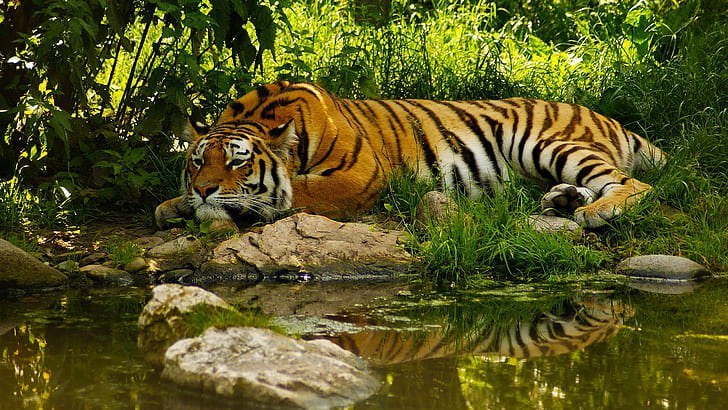Assam has traversed a milestone journey as the Manas National Park sees a significant rise in its tiger population.
In this story, we tell you what ushered this positive change, the symbolic and cultural relevance of Tigers in India, and what this increase in tiger numbers means for India.
Success story:
Two decades ago, the Manas national park in Assam had not even a single tiger in its possession. It was ravaged by the rampant poaching at the hands of insurgents, for twenty long years.
However, the picture has truly transformed today as Manas boasts of 48 members of the endangered species.
The results of the 12th annual camera trapping survey brought joy to the people of not just Assam, but the whole of the country. It covered 876 sq km of the park and adjoining areas with cameras placed at 285 locations.
The survey revealed the presence of 48 tigers at the national park, of which 38 were adults, 3 sub-adults, and 7 cubs. Further, it accounted for a three-fold rise in the number of adult tigers from 10 in 2010 to 38 in 2021, thus setting a record in tiger conservation in the country. By 2020, there were 30 adult tigers recorded in the park.
What ushered this success?
The rise in the tiger population has brought cheer to everyone in Manas and highlights that the tiger conservation efforts have finally borne results. The country has already surpassed the World Wildlife Foundation and Global Tiger Forum’s goal of doubling the tiger population by 2022.
The recent increase in the population of tigers could be attributed to the Covid-19 restrictions, by reducing the no of visitors in the park, thus reducing the human intervention.
Other species of big cats found in Manas:
The Manas national park is now a sprawling hub of not just tigers, but also other species of big cats.
Thirty-seven species of leopards were recorded in the national park, including thirty-one adults and six sub-adults. Five other species of wild cats, leopard cat, clouded leopard, marbled cat, golden cat, and jungle cat are also found in the park.
Other endangered species found:
The Manas national park houses many other endangered species. According to the survey, four endangered species, nine vulnerable species, four nearly-threatened species, and eleven species of least concern mammals as per the International Union for Conservation of Nature (IUCN) status, are found in the national park situated in Assam.
Among these categories, Manas is home to animals like the Asian elephant, hog deer, hispid hare, wild buffalo, rhino, sambar deer, swamp deer, spotted deer, barking deer, Himalayan black bear, Himalayan serow, Goral, black panther, and binturong.
Thus, it is evident that Manas is a healthy biodiversity hotspot and a breeding ground for tigers. The tigers are flourishing in the region and this significant recovery is exemplary for the globe. The increase in breeding females and cubs further reiterate this fact.
The historic cultural relevance of Tigers in India:
Tiger is postulated as the national animal of India. It has a revered place in India’s history, culture, and religious scriptures.
For ages, Tigers symbolize India’s magnificence, power, beauty, and fierceness. It is associated with traits like bravery and valor. It also has a significant place in the scriptures as the primary vehicle of Goddess Durga.




























 WhatsApp us
WhatsApp us